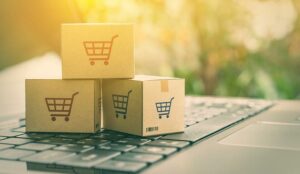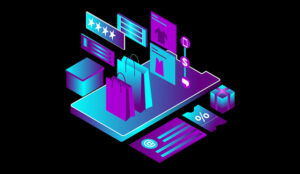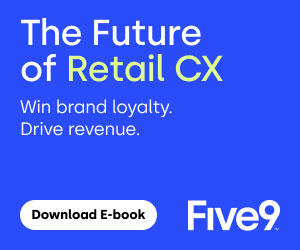Nessa Marriott at makepositive, part of Sabio Group, explains why a strong CRM and marketing automation strategy can be a game changer for retailers.
CRM and Marketing Automation Systems are often considered non-business-critical tools for sales and marketing.
However, CIOs and CTOs should add them to their agenda, especially when it comes to Retail.
Using the right CRM strategy and tools can add exponential value to the business in the form of enhanced customer experience (CX), while significantly reducing operational and service costs.
Having worked in this space for many years, I’ve identified four key areas where Retail brands and marketplaces can leverage modern customer relationship management (CRM) and Marketing Automation technologies to drive growth.
1. Enable Order Transparency and Accuracy
Customers expect more transparency and accuracy when looking at the availability of items or checking the status of their orders. With retailers having multiple systems to manage their operation (e-Commerce, Point-of-Sale, ERP, Warehouse Management and Order Management to name a few), their CRM can become the single source of truth.
What this means in essence, is that they’ll be able to integrate, manage and share data in near real-time across the organisation, empowering sales and marketing, branch network, e-Commerce platform, customer service etc.
Moreover, they’ll be able to connect and safely share information with their channel partners enabling efficiencies across the supply chain.
Ultimately, they’ll ensure that their customers enjoy an improved experience receiving accurate, up-to-date data about products, prices and orders across the different touchpoints of the business.
2. Timely, Accurate, Personalised Communication
An intuitive Marketing Automation tool, when seamlessly connected to the CRM, can help retailers establish timely, accurate, and personalised communication with their customers at scale.
Most marketing automation tools provide out-of-the box workflow, trigger and journey features so that sales, marketing and customer service teams can be more proactive in their engagement with customers.
Communicating at the right time with the right message via the right channel, can enhance transparency and prevent escalations when there is an issue. It can also significantly improve the overall customer experience with the brand, strengthening satisfaction, loyalty and share of wallet.
3. Give Customers More Delivery and Pickup Options for their Orders
Creating seamlessly connected ecosystems means that retailers can give customers a wider range of options when it comes to receiving their order faster.
Whether it is utilising available in-store stock to fulfil orders, expanding the affiliate network for drop-shipping, or optimising last-mile delivery, sharing order data in real-time backed with intelligent routing based on set rules and criteria, can create significant efficiencies in time, cost and effort, strengthen supply chain ties, and improve customer satisfaction.
4. Leverage Web3 to Build Trust and New Experiences
Web3 is an umbrella term for the decentralised web and involves sharing data across a network of computers in a fully distributed manner, enabling consumers to gain privacy and ownership of their online data. For retailers, Web3 can be a game changer:
- It enables retailers to shorten the supply chain and connect directly to consumers in new, ultra-personalised ways. This way they can reduce costs and time-to-market, developing at the same time a better understanding of their customers, which can in-turn help them to communicate and market more effectively
- Consumers have to consent for any of their data to be shared, whereas the data itself is more trustworthy by design. By offering consumers greater privacy and control, it allows retailers to build trust, gaining at the same time better insights into consumer behaviour
- Using decentralised technologies like blockchain, Web3 makes it possible to track the entire lifecycle of a product more efficiently, enabling retailers and consumers alike to verify that a product is genuine. Retailers can create new value promoting supply chain transparency and traceability, whilst providing consumers with greater confidence in their purchases.
- Cryptocurrency payments is an area that is expected to evolve and expand with Web3. As these technologies mature and become more widely adopted, consumers will be able to shop from anywhere in the world without the nuances of traditional transactions, like exchange rates, transfer processing times, and international payment fees
Given the current market uncertainty, CRM leaders should work closely with CTOs, COOs and CIOs and align their digital transformation efforts to create seamless customer journeys that are driven by an agile operating model, and a connected, transparent retail supply chain.
For more information about Sabio - visit the Sabio Website
Call Centre Helper is not responsible for the content of these guest blog posts. The opinions expressed in this article are those of the author, and do not necessarily reflect those of Call Centre Helper.
Author: Sabio
Published On: 23rd Sep 2022
Read more about - Guest Blogs, Sabio






 Sabio Group is a global digital customer experience (CX) transformation specialist with major operations in the UK (England and Scotland), Spain, France, Netherlands, Malaysia, Singapore, South Africa and India. Through its own technology, and that of world-class technology leaders such as Amazon Connect, Avaya, Genesys, Google Cloud, Salesforce, Twilio and Verint, Sabio helps organisations optimise their customer journeys by making better decisions across their multiple contact channels.
Sabio Group is a global digital customer experience (CX) transformation specialist with major operations in the UK (England and Scotland), Spain, France, Netherlands, Malaysia, Singapore, South Africa and India. Through its own technology, and that of world-class technology leaders such as Amazon Connect, Avaya, Genesys, Google Cloud, Salesforce, Twilio and Verint, Sabio helps organisations optimise their customer journeys by making better decisions across their multiple contact channels. 









